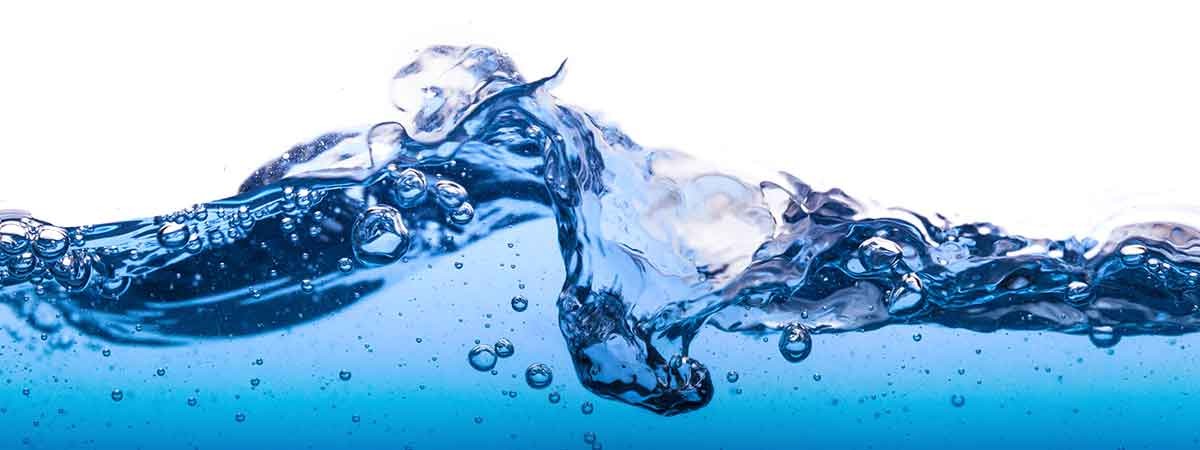Gases dissolved in liquids can be quite annoying. Oxygen makes beverages stale, while carbon dioxide changes the pH value and can complicate bottling. Vacuum can be used to remove these gases.
Anyone who has ever left a fresh glass of tap water at room temperature or heated a pot of water knows the phenomenon: as the water temperature rises, gas bubbles form on the glass wall or the bottom of the pot. They mainly contain carbon dioxide and oxygen. The gases enter the water from the air, most of them already at the waterworks. There, the water is repeatedly aerated during the treatment process. These two air gases in particular dissolve in the liquid. At the beginning of the 19th century, the British chemist William Henry discovered that solubility depended on the partial pressure of the gas and the temperature of the liquid. It rises with temperature but lowers with decreasing pressure.
Gases impair shelf life and taste
Even small quantities of gas quickly develop into undesirable factors in the production of juice, wine, beer and soft drinks. Dissolved oxygen, for example, promotes germ growth and destroys vitamin C and other antioxidant substances. This affects the smell, taste and shelf life of the drinks, and can also cause unappetizing discolorations. Dissolved carbon dioxide causes fibrous parts and bits of fruit to float and then deposit on the surface. Free gas bubbles also increase foam formation, especially in beverages that have previously been heated. The pouring speed often needs to be drastically reduced in this case.
Vacuum allows the unwanted gases to be elegantly removed from the processed liquids. In spray degassing, for example, the water is sprayed through nozzles into a vacuum vessel in which the pressure is less than 300 millibars. The gas bubbles expand and burst in the negative pressure of the degassing unit. A vacuum pump extracts the released gas by suction.
With and without stripping gas
Membrane degassing is mainly used for the production of juice, wine and beer. In a column, the beverage liquid flows around a hollow fiber membrane that only allows gases to pass through. The dissolved gases penetrate through the membrane and vacuum pump extracts them by suction. In order to achieve the lowest possible residual gas content, a stripping gas can also be used on the gas side. Nitrogen is usually used for this purpose. In any case, vacuum is applied on the gas side. The pressure drop "draws" the dissolved gases from the liquid.
For the production of still mineral water, which requires a particularly low residual content of oxygen and carbon dioxide, degassing takes place by connecting several columns in series. Similar processes also exist in the chemical industry, where undesirable reactions of liquid components need to be avoided.

Protecting the Taste of Thirst Quenchers
Vacuum degassing removes undesirable components from liquids
How does vacuum degassing protect district heating networks?
District heating networks require not only water that has been cleaned of solids and salts, but also water that has been degassed and deaerated. This is above all an economic question because circulation water that contains gas increases operating costs: dissolved carbon dioxide turns the water into an acid that causes metal parts in particular to corrode more quickly. To prevent this, ion exchangers are used, which in turn require a constant supply of chemicals for regeneration. This measure is unnecessary if the water in the line network is degassed. The procedure also prevents the undesirable effects of oxygen, which include the promotion of germ growth and corrosion. The latter can lead to the formation of biofilms, which for example, block filters or narrow the cross-section of valves and lines.
District heating networks require not only water that has been cleaned of solids and salts, but also water that has been degassed and deaerated. This is above all an economic question because circulation water that contains gas increases operating costs: dissolved carbon dioxide turns the water into an acid that causes metal parts in particular to corrode more quickly. To prevent this, ion exchangers are used, which in turn require a constant supply of chemicals for regeneration. This measure is unnecessary if the water in the line network is degassed. The procedure also prevents the undesirable effects of oxygen, which include the promotion of germ growth and corrosion. The latter can lead to the formation of biofilms, which for example, block filters or narrow the cross-section of valves and lines.